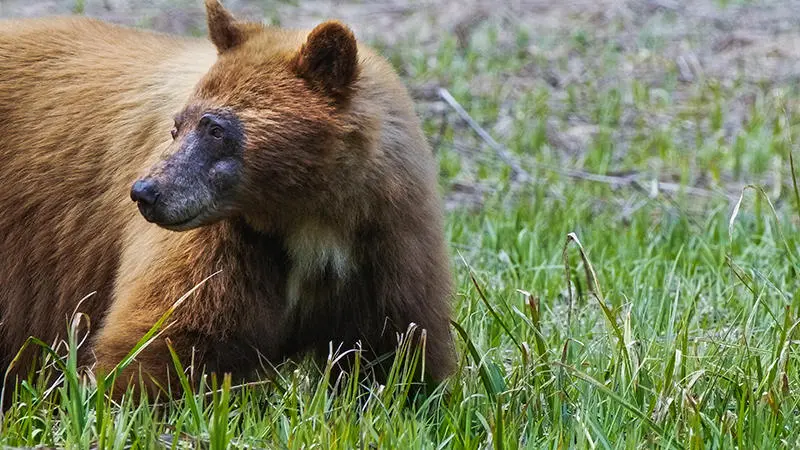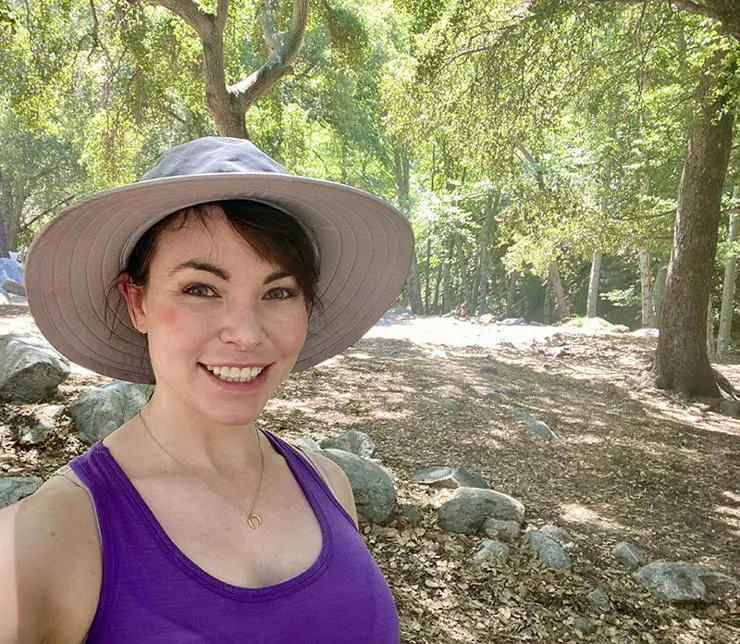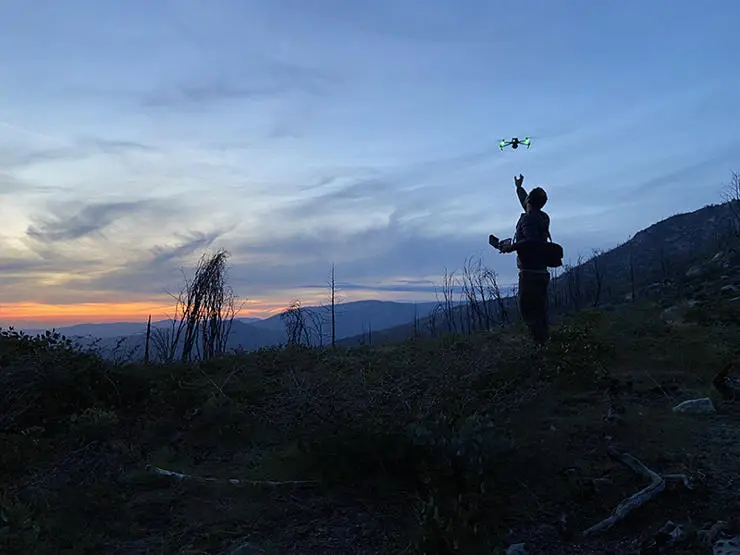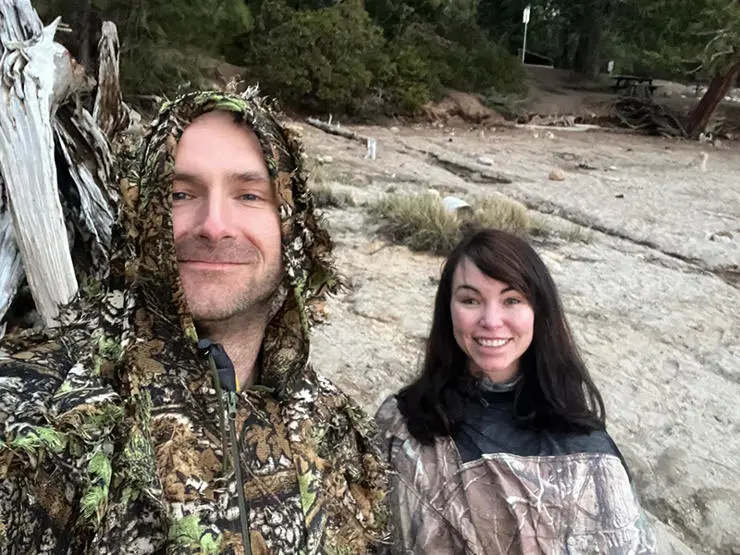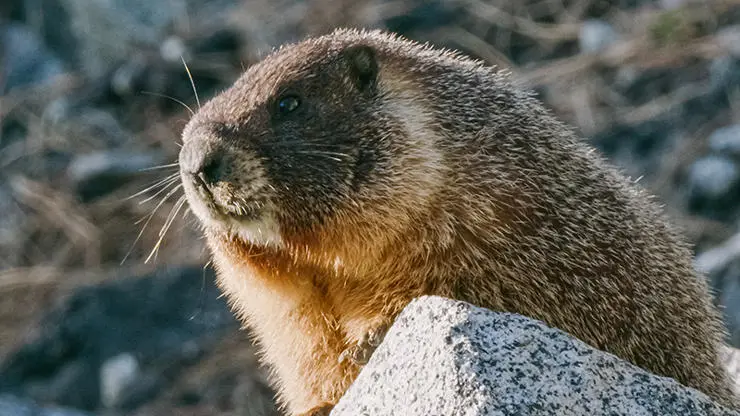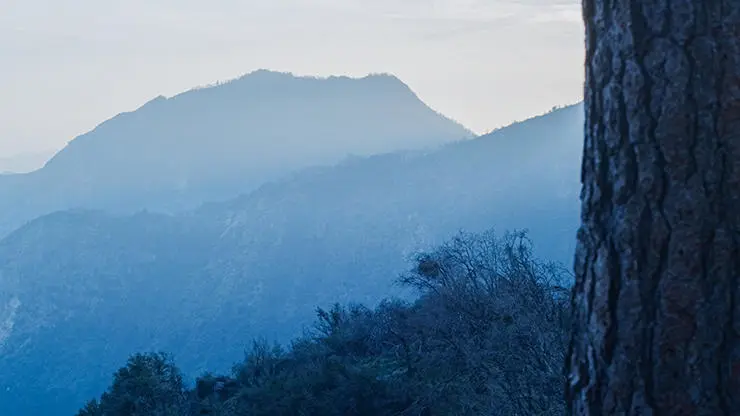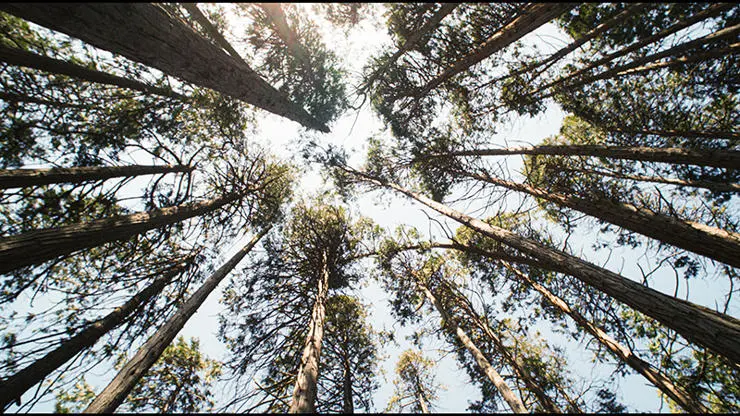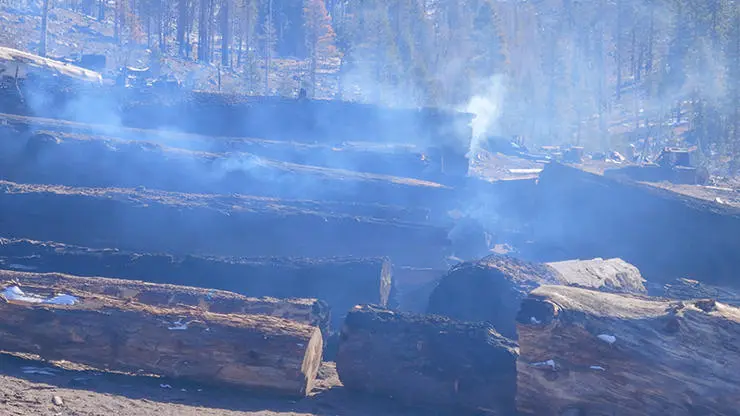A University of Central Lancashire academic and award-winning poet is co-writing and producing a film about wildlife recovery following devastating wildfire in California.
Dr Yvonne Reddick has teamed up with Natural history filmmaker Aleks Domanski on Life after Fire, a documentary showcasing the remarkable recovery of forest ecosystems after wildfire in California’s Sierra Nevada mountain range in 2021.
Written and produced by Yvonne and filmed and directed by Aleks over six weeks during April and May, the film journeys through Sequoia National Park and Sequoia National Forest to observe its recovery four years after the fires, which burned a total of 88,307 acres across Tulare County Between September and December 2021.
By bringing together natural history footage and human stories, we hope we can tell some hopeful narratives.– Dr Yvonne Reddick
The duo captured bears, woodpeckers and marmots returning as well as ospreys building their nests. In the film, Yvonne and Aleks also meet environmental scientists at the University of California, Los Angeles (UCLA) and the Natural History Museum of Los Angeles County, and hear what it was like to escape the more recent Palisades Fire of January 2025.
“It’s a great pleasure to be working with UCLA’s Institute for Environment and Sustainability, and with my friend and colleague Aleks Domanski,” said Yvonne.
“By bringing together natural history footage and human stories, we hope we can tell some hopeful narratives. There’s so much doom and gloom about climate change, but we can be inspired by birds like black-backed woodpeckers, which move in to burnt forests precisely because of beetle larvae attracted to this environment, and we can work with trees like the live oak, which catches embers to prevent fires from worsening.”
... we hope the film will inform the audience about the limits of nature's fire-recovery processes and encourage sustainable choices that reduce the risk of wildfire in these globally unique habitats.– Natural history filmmaker Aleks Domanski
Aleks said: “Shooting the natural history segments for Life After Fire on location in the Sierra Nevada was an intensely emotional experience. We had long days working in the wilderness, with equipment and clothes blackened by the devastation of unprecedented wildfires and drones returning smelling of smoke from filming recent burns.
“By showing these interconnections and successful recovery stories, we hope the film will inform the audience about the limits of nature's fire-recovery processes and encourage sustainable choices that reduce the risk of wildfire in these globally unique habitats.”
I’m thrilled about working with citizen science projects such as Project Phoenix.– Dr Yvonne Reddick
As part of the project, which is supported by the Leverhulme Trust and John Muir Trust, Yvonne and Aleks are working with Project Phoenix, a community science monitoring project studying the effects of smoke on birds in neighbourhoods across California, Oregon, and Washington.
Dr Allison Shultz, Curator of Ornithology at the Natural History Museum of Los Angeles County, said: “We know how damaging wildfire smoke is to human lungs, but we’re just beginning to understand its impact on birds. You might think they could just fly away to safety, but birds are especially vulnerable because of adaptations like their hyper-efficient lungs, and we’re investigating wildfire smoke’s impact in a number of ways.
"We’re measuring the black carbon found on bird feathers through space and time in our collections. Feathers are kind of like air filters, so, how dirty a feather is can tell us how exposed that bird was to wildfire smoke and air pollution. Then, through community science, including Project Phoenix, we’re looking at how birds are responding to these increasingly devastating events in real time. We want to understand how birds escape smoke or not, and anything we might do to better help them survive and thrive as wildfires increase across the globe.”
We want to understand how birds escape smoke or not, and anything we might do to better help them survive and thrive as wildfires increase across the globe.– Dr Allison Shultz, Curator of Ornithology at the Natural History Museum of Los Angeles County,
Yvonne added: “I’m thrilled about working with citizen science projects such as Project Phoenix. These show just how much people care about birds and want to help them. We learn simple actions that everyone can take to help our ecosystems.”
Yvonne and Alex came up with the idea for Life After Fire when considering climate change stories. It follows on from their first film Searching for Snow Hares, when, in 2023, Yvonne and Aleks journeyed across the wintry Cairngorm Plateau in the Scottish Highlands in search of mountain hares and meeting people determined to protect the snowy winters that the hares need.
Life After Fire will premiere in LA later this year at a special screening with UCLA and the Natural History Museum of Los Angeles County, before further screenings in 2026 at festivals, museums and universities.
People can find out more by visiting Domanski Photographic.
